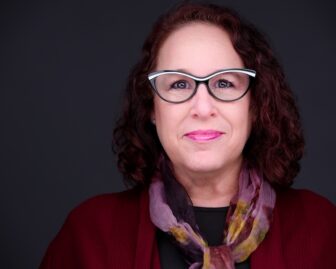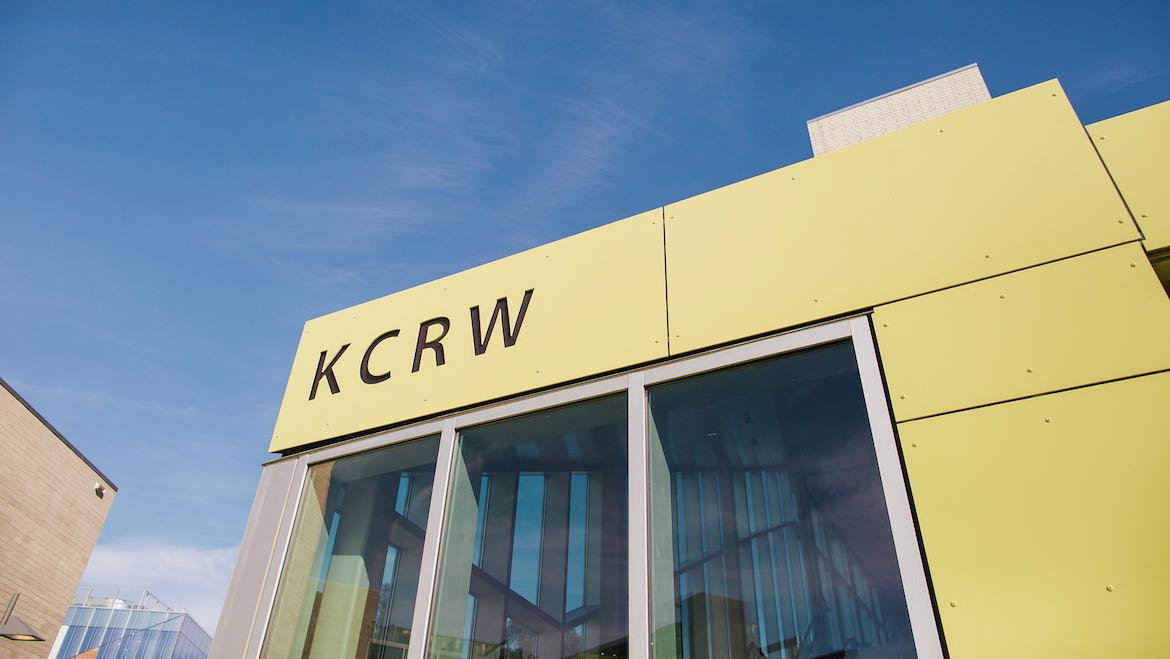Audience losses are compounding for public radio news stations. Now what?

ridvan_celik / IStock
Audience analyst Dave Sullivan has been trying to “sound the alarm” about public radio’s declining cume ratings, a key metric for station fundraising and sustainability.
The average weekly cume for news stations had been relatively stable, hovering around 12 million from 2016 until 2020, when it slipped to 10.8 million. The decline accelerated during and after the pandemic, signaling a historic shift and sending up red flags.
Cume ratings, once a sign of stability in public radio’s listenership, are now a “leading indicator” of audience decline, said Sullivan, manager of Portable People Meter client services at the Radio Research Consortium. “We expected it to bounce back quickly after the pandemic, and it just hasn’t.”
According to Sullivan’s analysis of 46 public radio news stations, the weekly cume dropped 13% from 2022-2023 and has dropped more than 24% since 2019.
Compared to other formats, news stations have taken the brunt of the weekly cume losses. Triple A stations are down more than 6% from 2019. Classical stations are down nearly 25% from 2019 but only 2% from 2020, according to Sullivan’s research.
If listeners are “too distracted” to listen to their local station for at least five minutes per week — the minimum listening threshold to be included in a cume rating — it’s a significant sign of problems, he said.
Public radio stations also rely on the time spent listening metric to measure loyalty and track how well they are converting listeners into members. Their cumes already tend to be lower than commercial stations, so when they drop it’s “a double whammy,” Sullivan said.
The loss in cume is “a big deal,” said Abby Goldstein, president of the Public Media Content Collective. As a measure of the number of people who are cycling through the audience and are receptive to membership messaging, cumes are a key metric for building listener-sensitive revenues.

The vast majority of a station’s revenue comes from listener-sensitive sources, she said, including membership and underwriting. “Our business model is reliant on strong broadcast performance.”
Goldstein described recent layoffs at public radio stations as “a direct result of a downturn in revenue and corporate support. And that is directly associated with podcast and with broadcast audiences.”
Many public radio leaders who spoke with Current pointed to the pandemic as the trigger for declining cumes. COVID lockdowns disrupted commuting patterns and accelerated adoption of on-demand media consumption. To slow the decline, station leaders and audience analysts offered tried-and-true solutions such as marketing, improving the listening experience and leaning into local connections.
Consultant Israel Smith, a veteran programmer and marketing specialist, is among those who foresees the continuation of a “long, slow decline for live linear listening,” which includes both broadcast and live digital streams.
He is skeptical that, five years from now, “we’re going to … wake up and be ‘Hey, it’s the big resurgence of live linear listening because X, Y and Z happened.’ I don’t think that’s going to happen at all.”
But Smith sees opportunity in the slope of the decline. “It’s kind of like our own individual personal health,” he said. “We’re all going to get old and die. Are we going to live healthy, active and rewarding lives as we get older and our bodies change? Or are we going to sit on the couch and lament that it’s hard to get up off the couch?”
‘It’s not just about buying billboards’
To RRC’s Sullivan, rebuilding the cume is “100%” about marketing.
“It’s about being there, being present and reminding people constantly that you exist, and introducing yourself to new people,” he said.
Smith, now president of the consulting firm Listen Again Tomorrow, cautioned about traditional remedies, such as national marketing campaigns from NPR or local billboard ads, as solutions.

For marketing to have a “lasting impact,” he said, it must be sustained over a long period of time.
“Public media has never done that,” Smith said. “The desire is absolutely there — but the resources aren’t.” It takes a significant chunk of money to launch a three-month local or national marketing campaign, and the return on that investment is negligible, he said. “I don’t think it matters much, except it gives us the ability to say, ‘Hey, we market ourselves.’”
But external marketing doesn’t have to be costly, according to Goldstein. She advises stations to “lean into the … communication channels you currently have and engage better with those people.”
“Up your game on the e-news front, up your game on the social media front. Be more engaging, be more present and … get out in the community. Leave the building … and be seen. Let your logo be seen.”
“It’s not just about buying billboards and making TV ads,” she added. Earned media is another way to gain exposure. “If you want the local press to pay attention to what you’re doing, do something unique and interesting.” That something needs to be outside the box of what your station already does, she said.
WITF in Harrisburg, Pa., is among the stations that have ramped up their marketing since 2020 by adding staff and focusing primarily on digital marketing strategies, said Fred Vigeant, chief audience officer. The team prioritizes marketing for digital content over terrestrial radio in part to attract a younger audience.
The station has been trying to figure out the potential benefits of marketing the radio station “to 25- to 54-year olds if they’re not spending as much time with radio,” Vigeant said. “Is it better for us just to focus our attention for that age cohort … on podcast listening and so forth? Because that’s really the space they occupy.”
Because Harrisburg is a diary market, WITF has limited access to ratings data. But Vigeant has watched the radio cume “trickle down with each book” as the median age of listeners, now at 61, “continues to march up.”
Younger listeners in their 40s and 50s who “in theory would maybe gravitate to our content” are not replacing the audience that’s aging up and passing on, he said.
Since 2019, WITF’s weekly cume has dipped from 140,000 to 112,000 and bounced back to 122,000 — what Vigeant called the “new normal.”
“If we can’t keep ourselves top of mind to our potential audience, or even our existing audience, then we’re going to continue to hit some very significant headwinds there,” he said. “We still have opportunity, but we certainly can’t be complacent about it.”
‘Be good company’
Another remedy for earning back audiences centers on improving the listening experience.
Smith, an evangelist for this approach, advises news stations to address two core roles of radio: tell listeners what’s going on and “be good company.”
To bring the audience back, “we have to make sure … we are reliably and consistently performing those two jobs,” he said.
Arvid Hokanson, chief audience officer at KUOW in Seattle, said the station has been trying to focus on doing “the fundamentals well.”
KUOW was among the news stations hit by declining cumes. Weekly listenership hasn’t rebounded to pre-pandemic levels, but the cume has climbed back to a two-year high, he said.
“Just because you’ve lost audience in the last several years, you can’t just starve radio,” he said. “You still need to do it and do it well.”
Hokanson believes the 2024 elections give news stations an opening to “strike when the iron’s hot.” Historically, listening has increased during general elections.
KUOW has seen big spikes in listening to its digital stream during live feeds of breaking news events, he said. Unlike radio, the live digital feeds provide a way for stations to see what audiences are attracted to in real-time.
“People still tune in for big news and or breaking news,” Hokanson said, and that’s a chance to run promos that capture new listeners.
Engagement with ‘audiences in your locality’
Jazz stations weren’t part of Sullivan’s ratings analysis, but WBGO in Newark, N.J., is bucking the trend. Its weekly cume increased nearly 42% between April 2019 and April 2024, according to CEO Steven Williams.
Williams attributed the growth to a comprehensive focus on “contemporizing the sound of the radio station.” Audience research commissioned in 2021 showed listeners wanted a balance between traditional and contemporary jazz, “which wasn’t really happening on the air at the time,” he said.

The research also found an “awareness deficit” of the station in the New York metropolitan region, he said. Nearly half of the survey respondents “had no idea that there was a jazz radio station in New York City.”
To build awareness, WBGO chose to focus on audience engagement over paid advertising.
“Because marketing is so expensive, we really had to rely on grassroots-level engagement,” he said. “So we doubled down with email messaging, with website engagement.”
Williams believes that public radio news stations could learn from how music stations like his have built local connections with audiences. “The key to reversing the downward trend is an increased engagement with the audiences that are in your locality,” he said.
“What I hear on many of the NPR news stations in a wide variety of markets is a lack of localism,” Williams said. And while many of public radio’s nationally produced news programs are “excellently produced shows, they don’t really have much to do with the local audience,” he said.
‘A sense of place’
In Austin, Texas, KUT and KUTX have adopted a similar playbook. Both stations aim to create “a sense of place” by localizing their on-air sound, said Matt Reilly, associate GM for programming.
Program hosts at KUTX, a Triple A station, live in Austin and talk about “what’s happening in town all the time,” he said. All-news KUT airs short sonic IDs in which Austinites provide a “snapshot of their day.” And the KUT newsroom produces local news spots that run throughout the day.
But that focus hasn’t kept the stations from experiencing cume declines, which began before the pandemic. KUT had a weekly cume that ranged from 220,000 to 250,000 listeners in early 2020; now the average fluctuates between 180,000 and 200,000, according to Reilly. On KUTX, weekly cumes averaged around 150,000 to 160,000 at the onset of the pandemic; now they range from 120,000 to 130,000, he said.
Reilly doubts that the stations’ cumes will recover to pre-pandemic levels, but he also rejects “the idea that that audience is gone.” He sees evidence that audiences are connecting with the stations in different ways.
“We’re getting good engagement,” he said. ”People show up like crazy” for station-hosted events. “We’re seeing a lot of social media, increased engagement on both stations.”
Reilly described the shift in listener behavior in generational terms. “The idea that we’re going to get somebody under the age of 40 to listen to the radio and in an appointment-listening fashion is just not going to happen,” he said.
That doesn’t change the fact that, despite the stations’ investments in digital platforms and content, “FM is still our biggest audience,” he said.
Stations need to keep working at growing their cumes while taking some creative risks with programming and new talent, Reilly said. The public radio system as a whole is too scared, he said.
“Nobody wants to piss anybody off. They’re so concerned about being even remotely offensive to one person that they play it safe, all the time,” he said. He urged station programmers and content directors to look at who is creating their programming and consider whether they are talking to younger generations.
Goldstein agrees that radio needs to “do something to try to stem that tide” of cume loss, but she’s still “bullish” on the medium.

“It’s free, it’s ubiquitous, it’s easy to use,” she said. “The research is showing that it’s still the number one choice for in-car listening. There’s still opportunity here on the radio side.”
Though most radio leaders expressed doubt that the weekly cume for public radio news stations can return to pre-pandemic levels, RRC’s Sullivan is confident that it can be done.
“The reality is news organizations continue shutting down,” he said. “… There’s no reason you can’t rebuild the cume because people are suddenly realizing that they don’t have the news that they used to have. And they need news.”







This is also a result of stations losing focus on in-home listening, not promoting their streams to computers and phones, not promoting smart speakers (or allowing “TuneIn” to get between stations and listeners) — and especially, ignoring OTA radio receivers entirely. Where’s that marketing for radio reception? Where’s the R&D? And will public and community radio stations ignore ATSC 3.0 audio streaming at their peril?
Really what do you expect when you run the same commercials for PBS year in and out asking for money. I have some money in my will for PBS but these commercials made me take it out. Total insensitivity to viewers. And then we have these reoccurring gurus who promise to make you live to 125 and join in on commercials. Same old same old again and again. We see Louis Gates on two channels at one time. Yes, there are
some good programs: Newshour and outstanding reporters, Frontline, Nova, lots of repetition here too. Really what the hell can you expect when you are boring and worst turning people off with this redundant programming. I’ve been watching PBS almost since its advent and I am now trying to find other resources on YouTube. I just can’t take it anymore.
Based on what I’ve seen (and admittedly, what I’ve seen is pretty limited), the primary place in which radio is listened to anymore is the car. It’s certainly wise to promote listening on phones, computers, bluetooth speakers, etc., but I’d always make sure to do the “traffic-and-weather-together” thing frequently when commuting is greatest (in Atlanta and LA, I’d just do it all day long if I could).